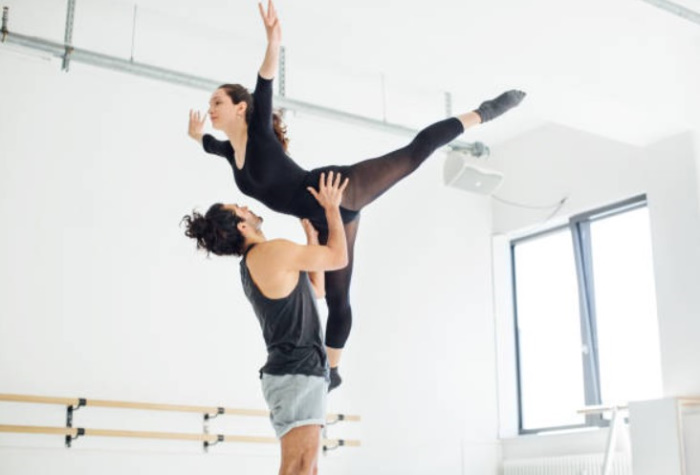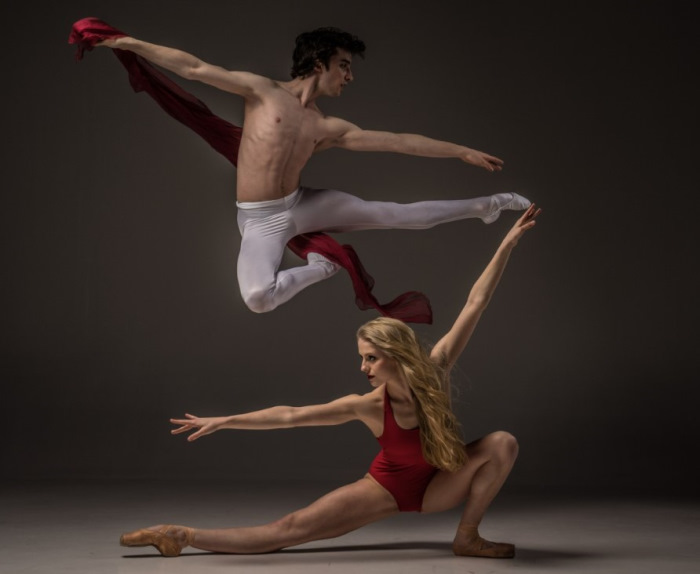Why Are Ballerinas So Skinny?
Alongside glamorous costumes and graceful movements, ballerinas are also known for their figures. Even people who don’t know much about ballet know that ballet dancers go to great lengths to keep their bodies slim.
But why are ballerinas so skinny? Is it essential?
The short answer is, yes, it is a part (albeit a controversial part) of ballet. In this article, we will explore this topic in greater depth. It is astonishing to know how much sweat and tears were behind the performances on stage.
Ideal Ballet Body
The Balanchine Creation
Many sources agree that George Balanchine was the creator behind the current body standards for modern-day ballerinas. He was a legendary ballet dancer and choreographer who contributed much to ballet as a major performance art form. He’s known to be very particular about the dancers he works with and is quite strict about the shapes of their bodies.
Thus, many sources have pointed out that it’s very likely that the current body standard for ballerinas – the willowy, sleek, near-skinny form – is Balanchine’s creation.
Due to being a very influential figure in ballet, Balanchine’s teachings and creations entered textbooks. Now, his influence can be seen in every ballet dancer. Most visible, of course, is his “ideal ballet body” standard.
However, finding someone who can perfectly meet all of these requirements is very hard. No one is perfect, after all.
Aesthetic vs. Athletic Consideration
But we’ve got to give it to Balanchine that the “ideal ballet body” wasn’t thought up just because it is pretty. There’s athletic consideration within it, too.
The body of a ballerina should be well-proportioned, healthy, and flexible enough that it should be able to withstand the stresses of a ballet performance.
So, excessively thin isn’t good. Maintaining a healthy weight with a low body fat percentage while maintaining muscle tone is better. A well-defined pair of legs can enhance the visual effect of your en pointe!
But there’s another reason ballerinas tend to be on the slimmer side, which is their male partners.
During pas de deux performances, a ballerina should have a good weight so that her partner can easily lift her in the air. The more weight the male dancer has to support, the higher the chance of him suffering from an injury. An over-extended back, for example, can cause chronic injuries that may end their career.
Why Are Ballerinas So Skinny?
Aside from sticking to the ideal ballet body that has been drilled into them since they were young, there are other reasons why ballerinas may seem skinny.
1. They Exercise A Lot
A professional ballerina may spend as much as 10 hours a day dancing. Training of various types, as well as classes, can take place as often as 5 or 6 days a week.
Ballet is a highly demanding field requiring dancers to push as close to perfection as possible. Their training schedule reflects that. And because their training is so harsh and physically demanding, their body naturally slims down as they burn fat and many calories during the day.
To gain weight again, ballet dancers must consume a considerable amount of food. But by the time they become professionals, they would have already gotten a special diet to keep them in shape. So, maintaining a slim figure is more manageable (but no less complicated).
2. They Are Pushed to Lose Weight
As we mentioned earlier, there is an ideal body type that all ballerinas are expected to conform to. And since almost every professional ballet dancer is hand-picked from a young age, most dancers’ weight would have been tightly controlled from the start. Diet plans – either mandated or self-imposed – aren’t uncommon in the ballet world.
As we will later learn, this can be problematic for many aspiring and professionally-active ballet dancers.
3. The Culture Of The Ballet Scene In Their Home Country
Depending on where they hail from and the ballet company they’re with, the body type of dancers within the cast will be different.
In countries where ballet is taken extremely seriously, like Russia, ballerinas are selected from a very young age. The selection process is rigorous, and judges select candidates with a very particular body type, so they should all have the same “baseline” body shapes and forms.
After selection, these young dancers undergo a regimented training pipeline, complete with diet plans to preserve the “ideal body form” as much as possible.
So, if you look at the Bolshoi Ballet from Russia, all dancers will have roughly the same body profile.
Meanwhile, in countries like the United States, where the attitude is far more relaxed and liberal, you will see more diverse body types. Many people see it as a good thing, as maintaining such a form is difficult and can be highly unhealthy.
4. Self-image and Self-critique
Suppose the audience has a default mental image of what a classical ballerina should look like (slim, graceful, fluid in motion, and so on). In that case, the pictures in the ballerinas’ heads are even more explicit and more vivid.
Most ballet dancers actively strive to attain the “perfect figure” for ballet. And from interviews and documentaries, many dancers went through a lot of hardship trying to achieve the elusive “ballet body.”
5. Being Skinny Means Lifting Easier in Ballet
During paired performances, the male partner will have a far easier time lifting the ballerina if they are light. Most ballerinas should fall between 85 to 130 pounds (age-dependent).
The performance will look stunted and awkward if the male ballet dancer has difficulty lifting his partner. It also increases his chance of suffering from a back injury.

6. Thinner Ballet Dancers Easily Get Picked from Producers
Producers actively look for ballet dancers that have the ideal physique. This is arguably the greatest reason ballerinas are always working at maintaining their slim body form. It quite literally decides whether they get hired or not.
Sure, you will hear many schools and directors waxing lyrical about how weight isn’t everything and talent plays a more critical role in selection. Nevertheless, body image is still very much a problem in the industry. Producers are known to reject anyone they think is too “overweight,” no matter how talented they are.
And they are not using “overweight” in the ordinary sense. The definition is incredibly ambiguous, and no one can say for sure where “slim” ends and “overweight” begins. Due to this ambiguity, many controversies and negativities have popped up within the industry.
Too Skinny Doesn’t Always Mean Good
“Eat nothing and see how far you can go.”
According to one source, that is one of the tips given to a ballerina at a notable ballet company. Unfortunately, while this mentality may seem harmful to us as outsiders, it is a prevalent mindset in the ballet industry.
Even after they had attained the ideal body size and form, many dancers still couldn’t cease the chase, even if it was at the cost of their health and well-being.
Additionally, a covert, harmful culture within the industry forces dancers to become as thin as they can be. It’s common knowledge that the less they weigh, the more chances of advancement will come to them. Conversely, the more weight they gain, the higher their chance of getting fired.
It’s also not uncommon for instructors and directors to pull dancers aside to talk to them about their weight or tell them to “watch what you eat.”
The problem is so bad and widespread that one of the Royal Ballet’s artistic directors was quoted as saying: “Any director of a company who said they have never had an anorexic dancer would have to have been lying.”
If a dancer becomes too thin, they’re at risk of injuring themselves. They can lose strength, their bones become more fragile, and their mental health becomes volatile. The latter, especially, can cause a wide range of behavioral problems. Anorexia is common among dancers, as well as purging and substance abuse.
One of the most infamous cases that have given people a look at how laborious the life of a professional ballerina is was in 1997. Heidi Guenther – one of the star ballerinas of her time – died at the young age of 22 due to cardiac arrest from her eating disorders. She used many purging pills, diet-aid pills, and skipped meals. The massive weight loss strained her cardiac system, eventually leading to her death.
It’s All Changing Now!
Cases like Heidi Guenther were a wake-up call for the industry. Immediately after her death, many American ballet companies changed their policies and pledged to do more about eating disorders.
One example was with the Boston Ballet, which began to offer nutrition counseling, therapies, and seminars on wellness for all of its members. It’s a marked improvement compared to the past, where dieting was unregulated and unspoken among dancers.
And, as we mentioned earlier, the culture is gradually shifting. In American ballet companies, the cast gradually expands to include dancers of various body types. This is an excellent thing for ballet dancers in particular and the state of the industry as a whole.
Final Words
And that’s the answer to the age-old question of “Why are ballerinas so skinny?”
Certainly, the beauty of the ideal ballet body cannot be disputed. That is what has given ballet performances the magic that we all love and enjoy, seeing the smooth and graceful movements of the dancers on stage. Nevertheless, it’s still worth acknowledging the sacrifices that dancers went through to give us the perfect picture on performance nights.


Nhận xét
Đăng nhận xét